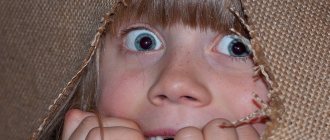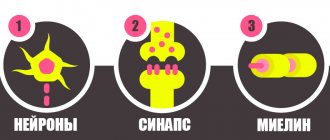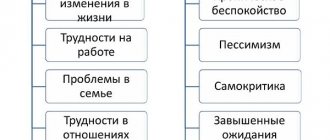A child living a social life goes to school, communicates with friends, attends various events and crowded places. Consequently, there are plenty of reasons to experience both positive and negative emotions. Teenagers can also experience stress. How to protect your child from it? Psychologists advise playing. Simple and effective games will help relieve nervous tension in a child, get rid of anxiety and teach him to express emotions. Therefore, parents should know what to do if their teenager is stressed and how to protect him.
What are the symptoms of stress in a child?
Physiological:
- insomnia,
- loss of appetite,
- headaches and dizziness
- enuresis, encopresis, constipation, etc.
Cognitive:
- memory impairment,
- attention,
- regression in development, etc.
Emotional:
- outbursts of aggression,
- irritation,
- fears,
- anxiety,
- depressive components, etc.
If the effect of stress is prolonged, it leads to disruption of the functioning of the psyche and the body as a whole.
And if adults have some skills to cope with stress, then children do not yet have these skills and children cannot even explain what is happening to them.
Therefore, it is paramount to pay attention to the fact that the child is stressed.
Sometimes parents themselves are in a difficult emotional situation and do not notice that the child is already traumatized. They learn about this already when psychosomatics or other disorders appear, such as neurotic or phobic manifestations.
If you notice that your child has experienced stress, communicate with him gently, calmly, and give him the opportunity to speak out.
Since children don't always understand their emotions, help your child identify and respond to them.
Reinforce your child’s emotional support with the following phrases: you are protected, I’m on your side, I’m nearby, I love you, no matter what happens.
It is also important to spend a lot of time with your child during these difficult moments.
Fairy tales and metaphors, games and special exercises are good for relieving and reducing stress.
During times of stress, stabilization is important for a child.
Make a schedule, plan things. You can do this together on a large sheet using crayons and colored pencils. Having a clear structure for your days will help your child calm down a little. Therefore, your daily routine will also be very important.
Don't forget that during times of stress, proper sleep, proper nutrition, walks and a calm atmosphere at home are important .
If you can’t cope with stress on your own, contact a specialist.
It happens that parents themselves have not yet learned how to support themselves under stress, so you can always start learning together with your baby.
Stress in childhood
Stress is a mental mechanism for protecting the child’s inner world. When the usual course of things is disrupted by any innovation for his psyche.
Causes of stress:
Conventionally, all reasons are divided into age-related and those related to the family environment. But they are often intertwined and have to be considered together. For a child of any age, the causes of stress can be:
- Injuries and disasters;
- Divorce of parents;
- A parent marrying someone who already has children;
- Parting with friends and moving;
- Violence;
- Real or imagined fears;
- The birth of a new baby in the family;
- Funeral of a loved one;
- Death of a pet;
- First trip to summer camp;
- The child is teased or bullied at school;
- Quarrel with a close friend;
- Learning problems
How can you tell if your child is stressed and not something else?
Duration. Having a bad mood for one day is completely normal. But if a child is capricious and does not obey for a week, or even a month, this should be a reason for concern.
Age appropriate. The situation when a two-year-old child cries and grabs the clothes of his mother leaving him is completely normal. But if the same thing happens to a nine-year-old child, then parents should take a closer look at the child.
Intensity . Is your child's behavior having a negative impact on his life? For example, all children are afraid of monsters, but perhaps your child cannot sleep out of fear thinking about them?
Deviation from the norm. How different is his behavior from usual? How does his reaction to problematic situations and unpleasant people differ from the usual, normal reaction for children of his age and temperament? If you think your child is stressed, you need to find out why. Children cannot always express in words what is bothering them, so there is a special guide to the symptoms, possible causes and ways to cope with childhood stress.
Infants and children under two years of age : increased irritability, refusal to eat, unexpected and sudden disruption of the overall sleep pattern.
Causes of stress : usually illness, separation from loved ones, changes in daily routine, and stress experienced by parents.
Help : Relieving stress in infants from the age of five months is best facilitated by games, especially hide and seek, which make the child believe that, despite temporary disappearances, mom and dad always return and that they are always somewhere nearby. When leaving, leave his favorite toys next to your child. And of course, be more attentive, kinder, more affectionate and caring with him. Remember that depressed or aggressive parents have a negative impact on even the youngest children.
From two to five : behavioral regression (the child returns to the pacifier, begins to wet his pants or bed again), excessive fears, aggressive behavior or uncontrollable outbursts of bad mood, stuttering, hyperactivity, tears as a reaction to everything new.
Help : Preschool children find it difficult to express feelings in words, especially when communicating with adults. Finding out what exactly is happening with the child is to listen to his conversations with his favorite toys, alone with which the baby is much more frank than next to adults. A good way to relieve stress is to do quick, mechanical painting using bright colors, as well as shouting: give your child a chance to scream in the street. Try to ensure that children spend at least a few hours a day in silence, alone with a book or quiet, traditional games. Talk to your son or daughter more often, take them in your arms, hug them.
Five to ten : unexplained pain and distress, including vomiting, increased concern about one's health, refusal to go to school or go out with other children, an overzealous desire to appear good, unexplained worries and fears, nervous movements, low self-esteem, sleep and eating disorders , behind in school.
Causes of stress : usually school, friends and academic failure or competition. Children at this age begin to understand that someone is smarter, someone is stronger, and someone is more beautiful than them, and this is a serious psychological burden for them. Bullying and insults at school top the list of causes of children's stress, followed by conflicts with teachers. The cause of childhood stress at any age can be a major family event, such as divorce, the birth of another child, moving to another place of residence and, of course, the death of a pet.
Help : First, you need to find out what the cause of stress is. The best way to find out is during a walk or going to the cinema, when the child is far from other family members and, perhaps, the cause of stress in the home environment. Drawings and games also help you learn more about your child's concerns. Various kinds of role-playing games help, when the child is required to show how he would behave in a given situation, as well as intense and constant physical exercise, such as jogging in the morning. Tell your children the truth about divorce, about death, about illness, or at least that part of it that will not lead to additional trauma. And of course, the child should know that his parents love him, support him, and are proud of him. And in conclusion, I would like to draw your attention once again to the mechanism of stress. This is always a confrontation between the internal and the unexpectedly new, which is forcibly imposed. Human experience suggests: if you sincerely extend a helping hand to your child and show him your true love, then any stress will be smoothed out. And since about 80% of stress in children stems from the family, it is worth analyzing the upbringing system you have chosen to see if there is love in it.
Literature:
- Great Encyclopedia of Cyril and Methodius 2007tm. Stress and health // Cyril and Methodius LLC, 1996.
- G. Selye. Stress without illness. - St. Petersburg,: Leila LLP, 1994.
- L.M. Popova. I.V. Sokolov, O. Gregory. How to resist stress. - St. Petersburg: Leila LLP.
- Yu.V. Shcherbatykh. Psychology of stress, - M.: Eksmo, 2006.
Teacher-psychologist of the department of psychological and pedagogical assistance: Garshina Olga Anatolyevna
Rabbit, lion and buffalo
According to psychologists, there are three types of people (children and adults) who differ in the way they react to stress. These are the reactions of a rabbit, a lion and a buffalo.
A “rabbit” is someone who reacts passively to stress, literally freezing, trying to hide from it if there is no way to escape. This condition is probably familiar to parents if they remember their feelings during exams. People of this type are quite capable of resisting stress, but not for long. Having splashed out their energy in one or two desperate attempts to resist the negative impact for them, they quickly move into the stage of exhaustion.
“Lion”, in response to a stressful influence, immediately furiously rushes to attack. This type of people is characterized by a violent and sharp reaction, often turning into aggression. Children can break, destroy, attack with their fists everything that, in their opinion, has caused stress. As a rule, the most striking manifestations of psychosomatic pathologies can be expected in such children.
"Buffalo" can resist stress for a long time and at the same time continue to work with the same intensity as before. It seems that stress has no effect on him, but this is only an appearance, since stress accumulates in the form of colossal tension in the body, which ultimately spills over into nervous disorders and psychosomatic diseases. The onset of sudden, catastrophic exhaustion is typical for the “buffalo”. Unfortunately, psychosomatic abnormalities are the most severe in such people.
It is important for parents to understand what type their child is in order to offer the right model of behavior in a stressful situation at the right time, which will help him return to a state of comfort.
What is childhood stress?
When talking about stress, it is necessary to understand the difference between stress in everyday life and stress from the point of view of a doctor. In everyday life, we most often call stress its emotional component, a negative reaction to what is happening. In the scientific world, the attitude towards stress is far from so clear.
In 1936, Canadian physiologist Hans Selye was the first to formulate the definition of stress as a general adaptation syndrome. According to his hypothesis, stress is a nonspecific response of the body to any demand, any stimulus, be it a new situation, a new environment, emotional discomfort, changed living conditions or illness.
In fact, all the body’s reactions to changes in life are manifestations of stress, so it is understandable why sometimes people react quite hard to positive news, objective changes for the better, because the body also experiences overstrain. Stress is not so much a harmful factor as it is a protective reaction of the body that allows it to survive. Any stress in both adults and children can be divided into three phases. The first phase is a reaction of anxiety and excitement.
This is the body's primary response when faced with an irritant, in which a large amount of so-called stress hormones is released. The second phase of resistance is when the body tries to overcome a stressful situation. And then everything depends on how the body copes with the stress: either it will be successfully overcome, or it will be insurmountable for it.
In the latter case, it often happens that the body’s resources are depleted to the limit, and a breakdown occurs (exhaustion - phase III of stress). If exhaustion develops as a result of short, acute stress, the body is able to recover. Otherwise, when stress is overwhelming, a variety of health disorders can develop.
When any drastic changes occur in a child’s life (for example, a transition from kindergarten to school, etc.), the parents’ task is to prevent stress from reaching the stage of exhaustion, since in this case there is a high probability of the child developing a psychosomatic illness.










